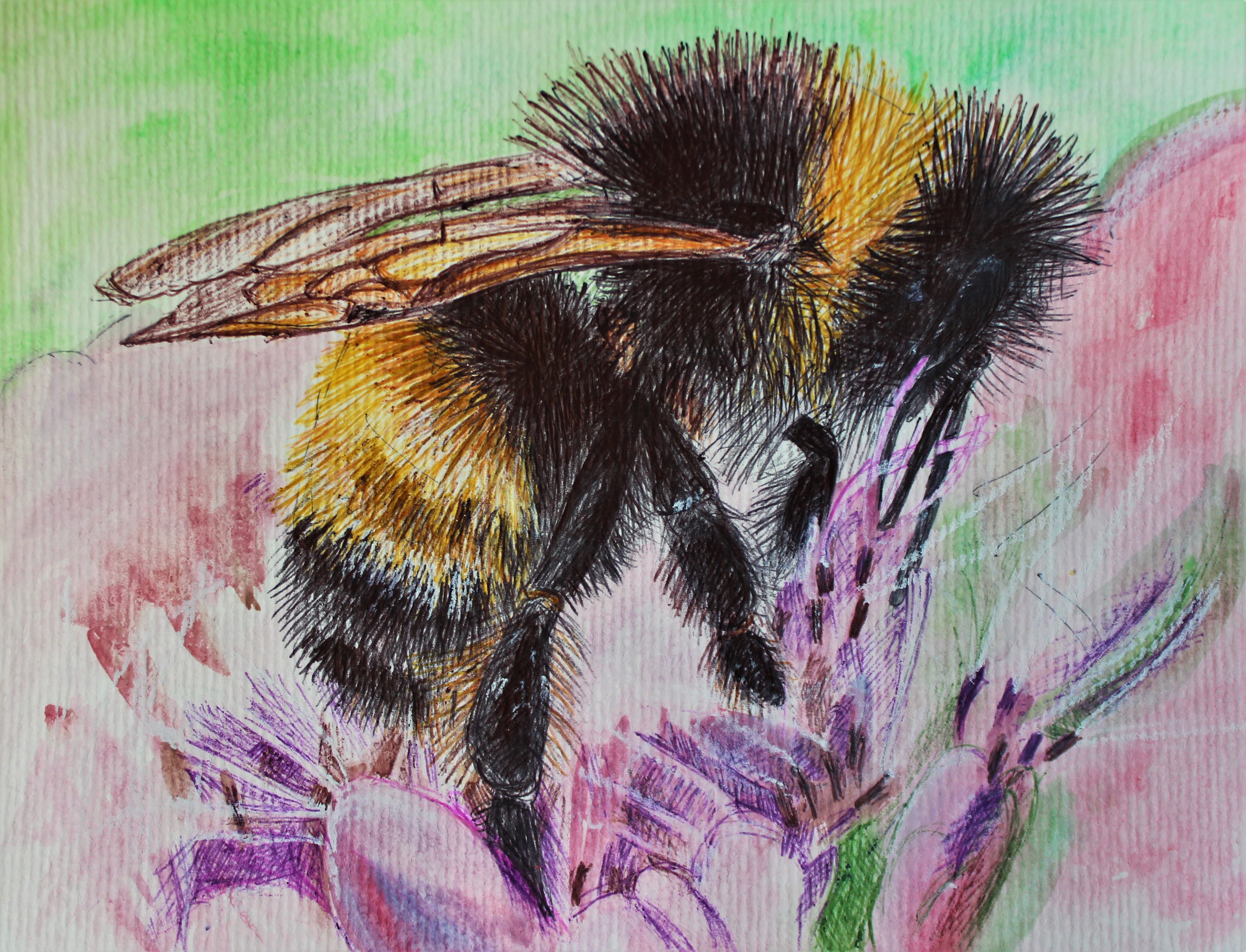Insects are all around us and sometimes it doesn't seem like they are in any danger, but some species are unfortunately also endangered like this bumblebee. Ballpoint pen and watercolour on paper.
1. Animal: Yellow Banded Bumble Bee (Bombus terricola):
- The yellow banded bumble bee is a highly social insect with a highly advanced level of social organisation. They live in colonies which include a founding queen, sterile female worker bees, male bees and new queens.
- Yellow banded bumble bees are an important and especially effective pollinator of wildflowers and crops - many of which, birds and other animals, rely on for food. Their large, fuzzy bodies collect and move more pollen than smaller bees. They can fly in cool, rainy conditions and when light levels are lower, such as at dawn and dusk.
- Yellow banded bumble bees prefer undisturbed woodlands, wetlands, prairies, and meadows. They are early-spring emerging bumble bees and are often found near forests and wetlands where the earliest flowering plants occur.
- The yellow banded bumble bee was once common throughout its range, and were historically found in 25 United States and 12 Canadian provinces. In recent decades, their range has receded in the southern and far western areas. It appears to have been extirpated from much of the Pacific Northwest, Southern Appalachians and Southeast Plains, and may be more patchily distributed where it remains.
- Yellow banded bumble bees consume pollen and nectar which provide protein, fats and carbohydrates. Abundant and diverse assemblages of native flowering of trees, shrubs and wildflowers, that bloom from early spring to fall, are necessary to provide these resources to the entire colony.
2. Why they are endangered?
There are a number of threats facing bumble bees, any of which may be leading to the decline of the yellowbanded bumble bee. The major threats to bumble bees include: spread of pests and diseases by the commercial bumble bee industry, other pests and diseases, habitat destruction or alteration, pesticides, invasive species, natural pest or predator population cycles, and climate change.
